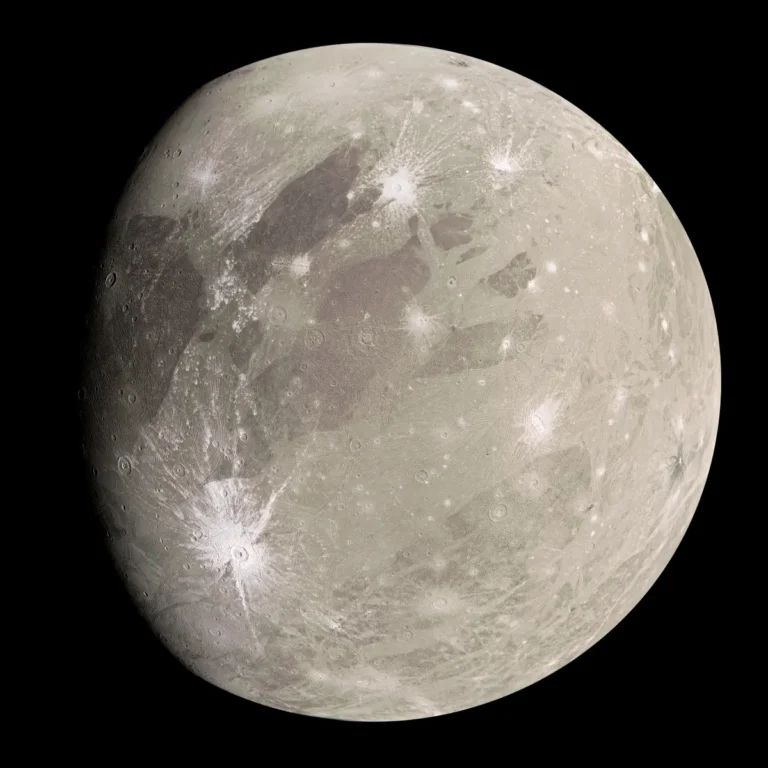Formation of Ganymede : Explained Simply
Ganymede, the largest moon of Jupiter and the biggest moon in our entire solar system, has fascinated scientists for decades. With a diameter of about 5,268 kilometers (3,273 miles), it’s even larger than the planet Mercury. But how did this giant moon come into existence? Let’s dive into the main theories about the formation of Ganymede, explained in simple terms.

Quick Facts About Ganymede
Before exploring the theories, here are some key facts about Ganymede:
- It’s the only moon known to have its own magnetic field.
- Ganymede is believed to have a subsurface ocean beneath its icy crust.
- Its surface is a mix of older, cratered regions and younger, grooved terrain.
Major Theories About the Formation of Ganymede
There are a few major theories that scientists have developed to explain how Ganymede may have formed. Each one is based on data gathered from telescopes, spacecraft missions (like Galileo and Juno), and computer models.
1. Co-Formation with Jupiter (Nebular Capture Theory)
Summary: Ganymede formed from the same disk of gas and dust that created Jupiter.
Explanation: This is the most widely accepted theory. Just like the planets formed from a disk of gas and dust around the Sun, Jupiter also had a mini-disk of material orbiting it during its formation. Ganymede and other Galilean moons (Io, Europa, and Callisto) likely formed from this disk
- The materials came together slowly through gravity.
- Over time, these particles clumped into larger bodies, eventually forming moons.
- Ganymede ended up with enough mass to become the largest of them all.
Why Nebular Capture theory is popular :
- It explains why the Galilean moons have regular, nearly circular orbits.
- It supports the idea that these moons formed in the same timeframe as Jupiter.
2. Accretion from Impact Debris (Giant Impact Theory)
Summary: Ganymede could have formed from the debris of a massive collision near Jupiter.
Explanation: In this theory, a large object (like an asteroid or another moon) collided with a bigger moon or even with Jupiter itself. The explosion sent debris into orbit around the planet, and over time, this material clumped together to form new moons—possibly including Ganymede.
Pros :
- Could explain differences in composition between the Galilean moons.
- Might explain Ganymede’s unique magnetic field.
Cons :
- There is little direct evidence of such a massive collision in Jupiter’s system.
- Doesn’t easily explain Ganymede’s large size and layered internal structure.
3. Capture Theory
Summary: Ganymede was a wandering body captured by Jupiter’s gravity.
Explanation: Some scientists once suggested that Ganymede might have been a free-floating object or a dwarf planet that was captured by Jupiter’s gravity.
Why it’s unlikely:
- Captured objects usually have irregular orbits, but Ganymede’s orbit is very regular.
- This theory doesn’t explain Ganymede’s relationship with Jupiter’s other moons.
Ganymede’s Internal Structure and Evolution
While this isn’t a formation theory by itself, it’s important to understand how Ganymede evolved after its formation.
Key Point: Ganymede is differentiated, meaning it has layers: a metallic core, a rocky mantle, and an icy crust.
- Heat from radioactive elements and gravitational interactions caused Ganymede to melt internally.
- This allowed heavier materials to sink to the center, forming a core.
- Lighter materials stayed on top, creating its icy shell.
This process is essential for explaining features like:
- Its magnetic field (caused by the liquid iron or iron-sulfide core).
The presence of a subsurface salty ocean.
What Space Missions Tell Us About Ganymede
The Galileo spacecraft gave us the first clues about Ganymede’s magnetic field and interior structure in the 1990s.
Now, ESA’s JUICE (JUpiter ICy moons Explorer) mission and NASA’s Europa Clipper mission are set to provide even more details. These missions aim to explore Ganymede’s surface, magnetic field, and underground ocean.
Final Thoughts: Which Theory Is Most Likely?
Most scientists believe that Ganymede formed from the same disk of gas and dust that surrounded Jupiter—similar to how planets formed around the Sun. This Co-Formation Theory best explains Ganymede’s orbit, composition, and relationship to Jupiter. Other theories like the Giant Impact Theory or Capture Theory offer interesting possibilities but don’t align as well with current evidence.